Measures relating to scattered settlements seek to ensure that wastewater treatment meets the requirements set out in the legislation on property-specific wastewater treatment systems. The aim is to promote the implementation of the legislation on wastewater treatment in rural areas outside sewer networks.
Measures to control acidity aim to mitigate the adverse effects of land drainage on the environment. Adverse effects of acidity loading are caused by drainage on agricultural land, in particular, but also due to drainage relating to peat production and forest drainage.
-
Measures relating to fish farming seek to ensure that new fish farms are located in areas where they cause a minimum of load on the environment or interference with aquatic organisms and the users of waters. In addition, the aim is to develop feed and fish feeding methods used on fish farms to reduce nutrient loading.
Restoration, regulation and water engineering measures always relate directly to a specific body of water. Regulation and water engineering measures seek to facilitate fish migration and mitigate the adverse effects of regulation on the aquatic environment. Water body restoration projects mainly aim to reduce adverse effects caused by eutrophication.
Measures relating to traffic seek to reduce the risk of pollution in groundwater areas. In particular, the aim is to design new roads and road improvements in such a way that their construction and maintenance or traffic do not produce risks to groundwater.
Measures relating to soil extraction aim to reduce risks and adverse effects caused by current and past activities and to enhance the monitoring of any adverse effects.
The aim of measures relating to land use is to contribute to the national objectives for land use that support water protection in land use planning, and to promote good practices in the steering of land use and the protection of surface and groundwater resources. The measures also seek to encourage planning that is sustainable in terms of water resources management at all levels of planning by making use of the range of tools provided for in the Land Use and Building Act.
Measures relating to agriculture are mainly based on the measures funded by the Rural Development Programme for Mainland Finland, and they primarily seek to reduce nutrient loading from agriculture on waters.
Measures relating to forestry seek to prevent any increase in suspended solids and nutrients due to runoff waters, especially in the most sensitive headwaters, where loading caused by other factors is usually lower.
The contamination of soil and the related pollution of groundwater may have been caused by various human activities. Measures relating to contaminated soil areas include the assessment of soil contamination, as well as risk assessment, remediation planning and remediation of the contaminated site.
Studies are carried out in the context of drawing up protection plans for groundwater areas to increase knowledge on the hydrogeology of the area and improve risk assessment. Based on this information, the plan puts forward protection and, if necessary, remediation measures for the groundwater area.
Measures relating to industry and mining activities focus on reducing the emissions of substances that are hazardous or harmful to the aquatic environment. Such measures are also often taken to reduce nutrient and organic matter loading on surface waters.
Measures relating to fur production seek to reduce emissions into surface waters, groundwater and soil.
The aim of measures relating to peat production is that all run-off waters are treated with the help of water treatment structures that are operational all year round and retain suspended solids, humus, nutrients and pollutants from run-off waters and also regulate the rate of flow.
-
Measures relating to municipal wastewater treatment aim to further increase the efficiency of municipal wastewater treatment and reduce emissions due to incidents.

